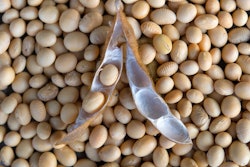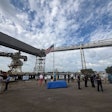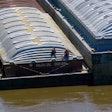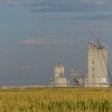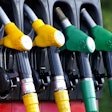
The U.S. Army Corps of Engineers is prioritizing crucial inland waterways infrastructure projects in its spending plan that was released Wednesday, including nearly $23 billion in supplemental funding.
In the plan released on January 19, the Army Corps announced it would spend $732 million to finish design and construction of Lock and Dam 25, located on the Upper Mississippi River in Winfield, MO. This is the first time this project has received construction funding since it was authorized in 2007.
The National Grain and Feed Association (NGFA) supported the Infrastructure Investment and Jobs Act, in which Congress provided $2.5 billion for inland waterways construction projects, giving the Army Corps 60 days to produce a detailed spending plan.
“NGFA thanks the Biden administration, Sens. Dick Durbin, D-Ill., Tammy Duckworth, D-Ill., Roy Blunt, R-Mo., and Chuck Grassley, R-Iowa, and Reps. Cheri Bustos, D-Ill., and Ashley Hinson, R-Iowa, for leading a bipartisan contingent of lawmakers in the House and Senate that highlighted the critical need to fund the Navigation and Ecosystem Sustainability Program (NESP) starting with Lock and Dam 25,” says NGFA President and CEO Mike Seyfert.
The Corps’ spending plan, which includes about $4 billion for commercial navigation improvements at ports and on inland waterways, details how the Corps will allocate money under the Infrastructure Investment and Jobs Act and the 2022 Disaster Relief Supplemental Appropriations Act.
“The existing locks on the Upper Mississippi River-Illinois Waterway were built in the 1930’s with 600-foot chambers to accommodate the standard vessels used for commerce during that time,” Seyfert says.
“However, today’s towboats can push a 1,200-foot-long tow of 15 barges which must ‘double-lock’ through, resulting in significant, costly delays. Modernizing these outdated locks will help discipline rail rates, reduce wear and tear on U.S. roads and bridges, and make American agriculture more competitive.”
NGFA led 24 other members of the Agricultural Transportation Working Group in urging the Army Corps to prioritize and fund NESP, including sending its most recent letter on December 16, 2021.
NGFA has worked with its member companies, agricultural partners and lawmakers to highlight the importance of healthy waterways infrastructure to the U.S. economy. U.S. agricultural exports traditionally contribute a nearly $15 to $20 billion surplus to the U.S. balance of trade, as well as provide more than 20% of U.S. farm income. In 2020, the U.S. exported 29% of its grains and oilseeds, with more than half of those exports transported on the Mississippi River system.
According to the American Soybean Association (ASA), upgrading the aging lock and dam systems along inland waterways is critical to increasing barge capacity for shipping larger loads of U.S. soybeans to international customers and has long been a priority issue for ASA.
In addition to ASA’s advocacy on this project, the United Soybean Board, the Soy Transportation Coalition, the Illinois Soybean Association, the Iowa Soybean Association, the Iowa Corn Promotion Board, the Minnesota Soybean Research and Promotion Council, and the Missouri Soybean Merchandising Council partnered to offer $1 million to help underwrite the cost of pre-engineering and design expenses of Lock and Dam #25.
Also included in the inland navigation construction project spend plans:
- Kentucky Lock: $465.49 million (funded to completion)
- Montgomery Lock: $857.71 million (funded to completion)
- Three Rivers: $109.15 million (spend plan summary lists this as funded to completion, but the project is authorized for $184.39 million)
- T.J. O’Brien Lock and Dam, Illinois Waterway (Major Rehabilitation): $52.52 million (funded to completion)
The U.S. inland waterways include nearly 12,000 miles of navigable water. The strength of America’s farm economy relies on the efficiency of its inland waterways system. ASA appreciates Congress and the president prioritizing investments in inland waterways infrastructure to ensure ongoing competitiveness for U.S. soy growers.





